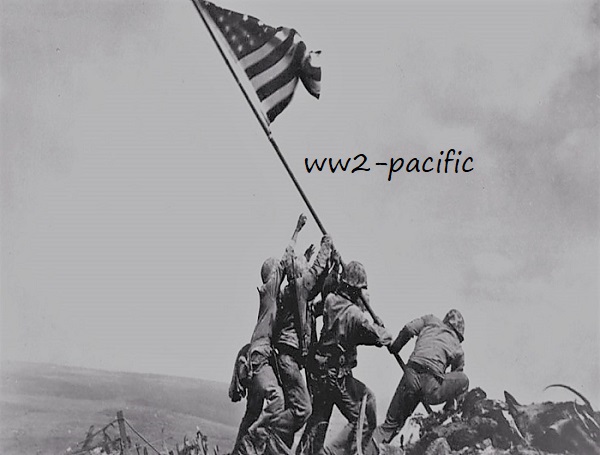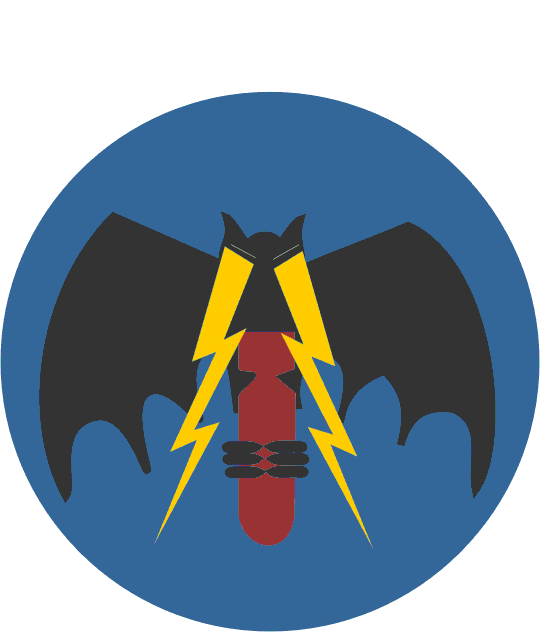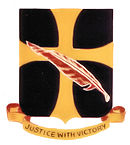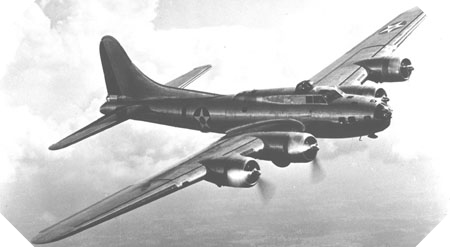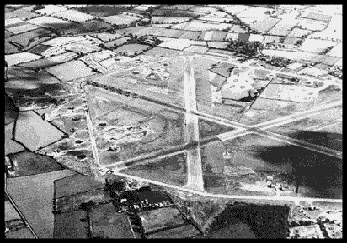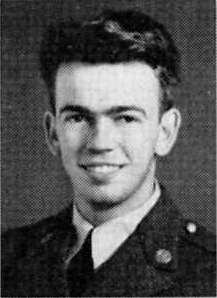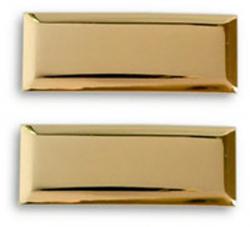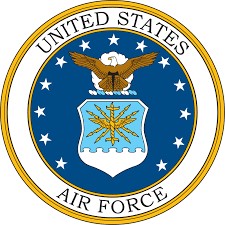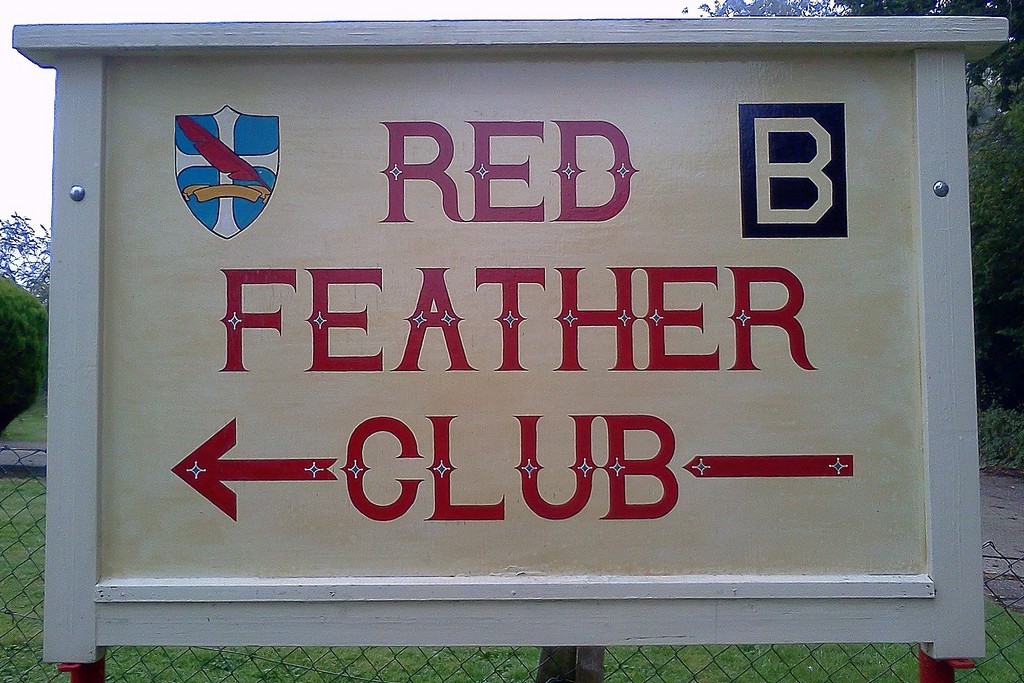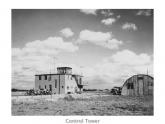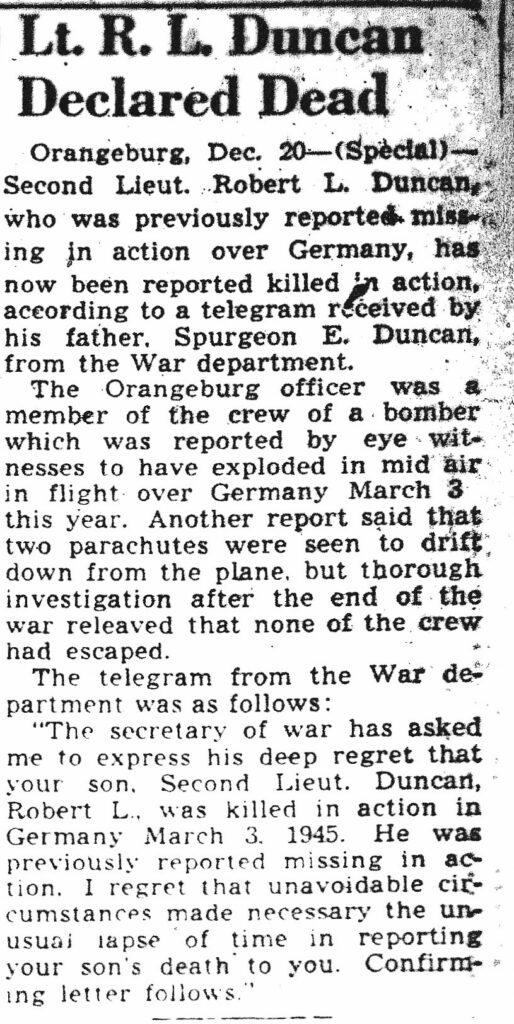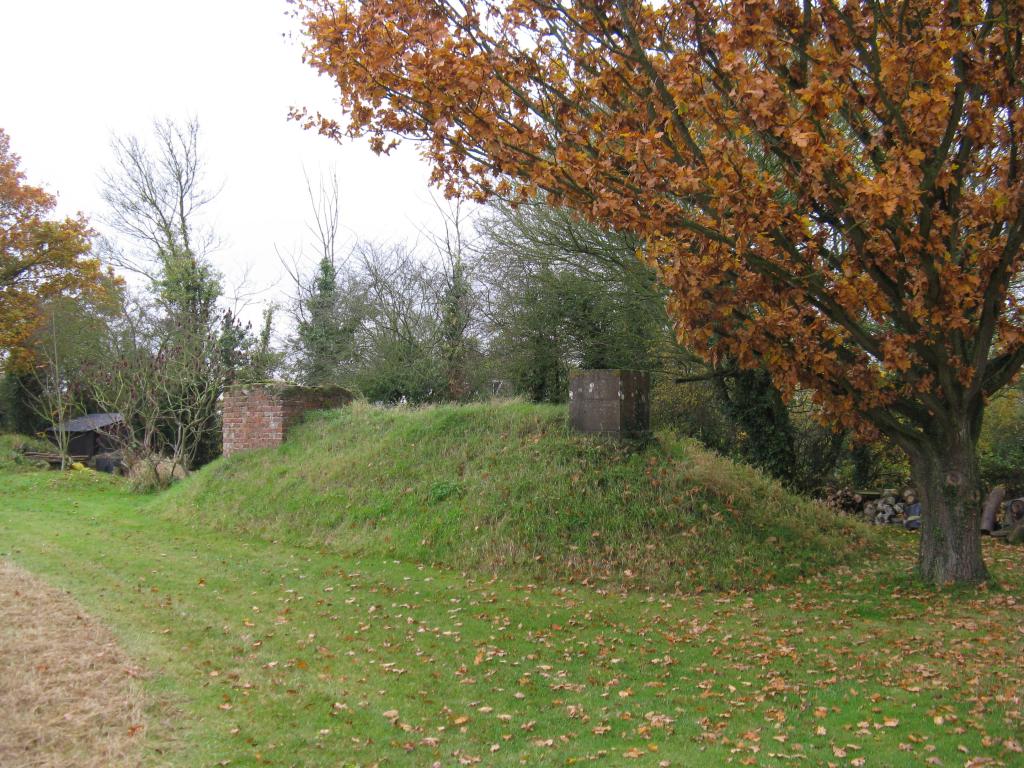Rank and Name, 2nd Lt. Robert Louis Duncan.
Unit/Placed in, 335th Bomber Squadron, 95th Bomber Group ( Heavy).
Robert was born on 1924, in Orangeburg, Orangeburg, South Carolina.
Father, Spurgeon Eratus Duncan.
Mother, Marie Louise (Bestill) Duncan.
Sister(s), Marie Louse Duncan.
Brother(s), Spurgeon E. Duncan Jr.
Robert enlisted the service at Miami Beach, Florida with Service #:0-828116.
Robert L. Duncan was a 2nd Lieutenant (Pilot) in the 335th Bomber Squadron.
Robert‘s Crew-members and their position on-board the plane a B-17 were,
Pilot Duncan, Robert L. 2nd Lt.
Co-Pilot Harvey, Thomas J. 2nd Lt.
Navigator Kolody, Rudolph W. 2nd Lt.
NoseGunner. McKerran, Elbert R. Sgt.
TopTurretGunner Bohlender, Chester F. Sgt.
RadioOperator/Gunner Peter, Edwin C. Sgt.
BallTurretGunner Carr, John C. Sgt.
Waist Gunner Wirth, Harvey Sgt.
TailGunner Lelly, Courtney Sgt.
Robert was KIA on the way to the Mission Target when they got shot by the Enemy, and crashed near Halberstadt, Germany on Mar. 3, 1945.
and he is honored with the Purple Heart, Good Conduct Medal, American Campaign Medal, Army Presidential Unit Citation, European-African-Middle Eastern Campaign Medal, WW II Victory Medal.
Robert was buried at Cambridge American Cemetery and Memorial, Coton, South Cambridgeshire District, Cambridgeshire, England.
Robert is now buried at Jefferson Barracks National Cemetery ,Lemay, St. Louis County Missouri.
Robert also has a Memorial Grave at Memorial Park Cemetery,
Orangeburg, Orangeburg County, South Carolina, USA.
Thanks to http://95thbg-horham.com/
https://www.familysearch.org/tree/person/details/LYCY-F4P
Jean Louis Vijgen, ww2-Pacific.com and ww2-europe.com.
Air Force Info, Rolland Swank.
ABMC Website, https://abmc.gov
Marines Info, https://missingmarines.com/ Geoffrey Roecker
Seabees History Bob Smith https://seabeehf.org/
Navy Info, http://navylog.navymemorial.org
POW Info, http://www.mansell.com Dwight Rider and Wes injerd.
Philippine Info, http://www.philippine-scouts.org/ Robert Capistrano
National Historian
Navy Seal Memorial, http://www.navysealmemorials.com
Family Info, https://www.familysearch.org
Info, https://www.pacificwrecks.com/
Medals Info, https://www.honorstates.org
Find a Grave, https://www.findagrave.com
Tank Destroyers, http://www.bensavelkoul.nl/
WordPress en/of Wooncommerce oplossingen, https://www.siteklusjes.nl/
Military Recovery, https://www.dpaa.mil/
335th Bombardment Squadron
The squadron was first activated in June 1942. It saw combat in the European Theater of World War II, where it was assigned to the 95th Bombardment Group, the only group in Eighth Air Force to earn three Distinguished Unit Citations.
The 335th Bomb Squadron was one of the four Bomb Squadrons of the 95th Bomb Group. Aircraft and men of this Bomb Squadron participated in most of the 95th BG’s 334 missions.
The 95th Bomb Group – based in Horham in Suffolk from June 1943 until the end of the war – was famously the first US group to bomb Berlin in daylight during WW2.
The last B-17 Flying Fortress shot down in Europe was from Horham and the 95th was awarded the Presidential Unit Citation (Distinguished Unit Citation) on three occasions, the most of any bomb group.
The group received its first Presidential Unit Citation for maintaining a tight defensive formation in spite of severe assault by enemy fighters while bombing an aircraft assembly plant at Regensburg in Germany on August 17th 1943.
It was awarded the second for withstanding concentrated attacks by fighters during the approach to the target and intense anti-aircraft fire directly over the objective while effectively bombing rail marshalling yards at Münster on October 10th 1943.
The unit received its third citation for the first daylight raid on the German capital on March 4th 1944 – while many participating groups, because of weather conditions, either abandoned the operation or struck other targets, the 95th proceeded to Berlin and successfully bombed a suburb of the German capital despite snowstorms, dense clouds, and severe enemy attack.
The 95th flew more than 300 missions and, as well as strategic bombing sorties, targeting harbours, industries, rail yards and cities, it dropped food and supplies to starving civilians and the resistance in occupied Europe, it supported the D-Day invasion and ended the war transporting liberated prisoners of war back to the UK.
Glenn Miller also famously played in one of the hangars at Horham Airfield on his final tour before his disappearance.
